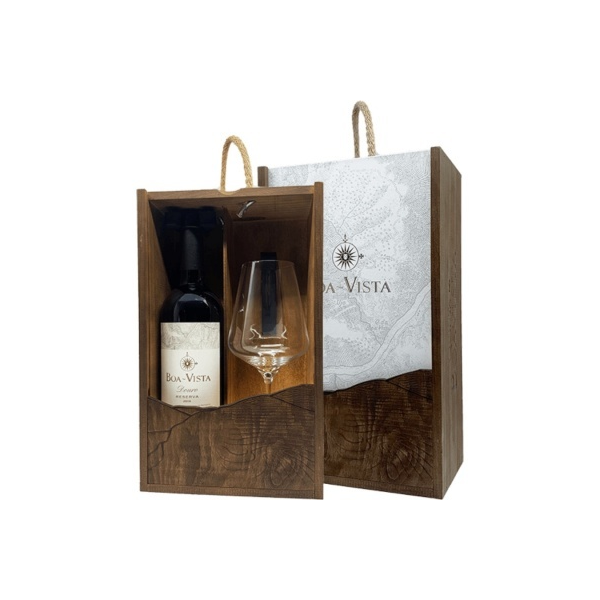Boa-Vista Reserva Red 2017 Case With Glass
64,00 €
Touriga Nacional is a red grape variety that is a key ingredient in both still and fortified wines from the Douro region. It presents bold notes of black fruits, commonly accompanied by memories of spices and violet.
Secondly, Touriga Franca is also one of the traditional grape varieties in the Douro region. More aromatic and lighter in its structure, it is slightly less concentrated, Touriga Franca has high tannins and a fresh aroma of ripe red fruits, spices complemented by floral notes.
In turn, Tinto Cão is a grape variety that dates back to the origins of the region. Over the years, it has been proven that Tinto Cão grows best in areas of the region less exposed to sunlight. The milder climate allows the grape variety's floral aromas to develop and stand out. Responsible for red wines with lower color intensity, it has good levels of acidity and tannins.
All of these are combined with a variety of old vines from the Quinta's 10 hectares that have vines over 80 years old.
6 in stock
Description

The available data on the founding of Quinta da Boavista are imprecise, but research carried out by professor and historian Gaspar Martins Pereira shows that, at the time of the first demarcation of the Douro wine region, the vineyards in the area of the farm were referred to as producing “wines Finos de Feiria”, the best Port wines produced in the Douro and destined for export.
The presence of Quinta da Boavista is also documented on the famous maps by Joseph James Forrester, Mappa do Paiz Vinhateiro do Alto Douro, from 1843, and Douro Portuguez and Paiz Adjacente, from 1848.
Local tradition even attributes him to the replanting and treatment of the farm's vineyards during the period of the powdery mildew outbreak, in the 1850s, with one of the farm's buildings still being called 'Casa do Barão'.
After Forrester's death, Quinta da Boavista was purchased from the baron of Viamonte, in 1866, by the heirs of the baron of Forrester – William Offley Forrester and Frank Woodhouse Forrester, who joined their uncle Francis Cramp – quickly transforming it into the center strategy of the operations of one of the most relevant Port wine brands in Cima Corgo, which continues to this day. Since the sixties of the 19th century and especially after the decimation caused by phylloxera in the last quarter of that century, Quinta da Boavista has benefited from major changes.
It is true that during the Pombaline era, this area of Cima Corgo was devalued by the legislator, but, soon after, it would become one of the areas of the Douro most sought after by English exporters, due to the excellence of its wines. And, in the 19th century, there are references to the sale of wines on the English market, such as the Vintage Boavista 1866, “which says a lot about the quality of the farm's wines”, writes professor Gaspar Martins.
In turn, Joseph James Forrester, an unavoidable figure in the history of the Douro and Port Wine, is known to have maintained a strong connection with the farm and its owners, and it is likely that he rented it or purchased its wine production.
It was during this period that two farms were purchased that were attached to Quinta da Boavista – Quinta da Cachucha and Quinta do Ujo – and the reconstruction of houses and plantations was carried out, as well as vineyards and new terraces, olive groves, orange groves, almond groves and pine forests.
During the 20th century, the Quinta went through challenging times, having been in the hands of several owners who brought their know-how to the wine production of Boavista wines. In 2020, the farm was acquired by the Sogevinus Group, one of the largest wine groups in the Douro.
Additional information
| Weight | 3 kg |
|---|






